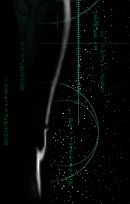The Tracks
Although the album was officially released in 1973 as one long piece, broken only by the interval of 'The Hare...', the original vinyl copies of 'A Passion Play', given to DJs for promotional purposes, included a track listing. These titles were omitted from the official release, but when the indexed Mobile Fidelity CD version of the album was released in March 1998, the track listing was restored.
Some of these indexed promos, seemingly those used in the USA in particular, did not feature named tracks, merely having 'Edit' numbers. Presumably the track names were not intended to be made public, as singles and tracks on compilations were similarly only given 'Edit' numbers.
The track timings of two 1973 live shows are included for comparison: the 20 July concert at the LA Forum, and the Seattle Center Coliseum show performed a week later on the 27th.
| Title |
Album |
LA |
Seattle |
|
| 1. Lifebeats |
1:14 |
3:24 |
5:35 |
|
| 2. Prelude |
2:14 |
2:14 |
2:27 |
A reworking of 'Tiger Toon' |
| 3. The Silver Cord |
4.29 |
4:22 |
4:24 |
|
| 4. Re-Assuring Tune |
1.11 |
1:09 |
1:13 |
|
| 5. Memory Bank |
4.20 |
4:37 |
5:03 |
|
| 6. Best Friends |
1.58 |
4:04 |
3:59 |
|
| 7. Critique Oblique |
4.38 |
4:41 |
5:14 |
|
| 8. Forest Dance #1 |
1.35 |
- |
1:15 |
|
| 9. The Story Of The Hare |
4.18 |
- |
4:16 |
|
| 10. Forest Dance #2 |
1.12 |
- |
1:39 |
|
| 11. The Foot Of Our Stairs |
4.18 |
4:18 |
4:57 |
|
| 12. Overseer Overture |
4.00 |
3:58 |
3:59 |
'Edit 8' on 'MU'. Released as a single, b/w 'Edit 9'. |
| 13. Flight From Lucifer |
3.58 |
3:57 |
2:49 |
'Edit 9' on 'Repeat'. B-side of the 'Edit 8' single. Original form of 'Passion Jig' |
| 14. 10.08 To Paddington |
1.04 |
- |
0:48 |
10/8, i.e. 10 August , is Ian's birthday. |
| 15. Magus Perde |
3.55 |
- |
4:03 |
Featured on the '25th Anniversary Collection' |
| 16. Epilogue |
0.43 |
- |
0:34 |
|
 |
The track titles have been added to the annotated Play script, highlighted in red at the beginning of each track. However, I feel the divisions are somewhat arbitrary, not seeming to match the natural musical, lyrical, dramatic or thematic breaks in the Play. Some tracks, such as 'Best Friends', start in the middle of scenes or even verses; rather illogical points, in lyrical, musical, dramatic or thematic terms.
My initial thought was that the tracks were devised simply to provide radio-friendly segments for 1973 DJs, to be played out-of-context.
An alternative explanation could be that the track divisions reflect the way the album was recorded.
Perhaps each track was recorded separately, then assembled for the final album. Presumably Ian had learned his lesson from the TAAB recording problems and didn't try to record all of APP onto one tape! Perhaps each segment was as much of the piece as the band could play without having to stop to realign their fingers.
Either way, I don't think the track divisions have a significant role in the structure of the Play as a whole - could this be a reason why the official album release wasn't divided into tracks (even on the liner notes)?
The CD
When the album was first released on CD, it was presented as two tracks, reproducing the sides of a LP, but as Michael Dawson notes, it was soon reindexed as one track to eliminate the gap in the middle of
'The Hare...', in response to listener complaints. Steve Derbes suggests that the opportunity was taken to "clean it up slightly - not the full digital remaster job, but a better mastering than the original CD release." However, there is no clear evidence that more was done than simple re-editing, leaving the music itself unchanged.
The Cover
The album cover is monochrome - not a common practice for 'pop' records. However, this was presumably done to emphasise the contrast between the dead, black & white ballerina on the cover and the (reborn?) ballerina shown in 'living' colour on the back cover.
Much has been made of the butterfly on the back cover - a symbol of rebirth? Well, no, as it's not part of the artwork. This was merely the way the Chrysalis company logo was depicted in 1973 and earlier, so appeared on all Chrysalis records; it is as relevant to the album or artwork concept as the copyright statement. Records produced by Reprise (Warner Bros.) for the Australian market didn't feature the butterfly at all, the same space being occupied by the Reprise 'r'. The artwork accompanying the 2003 Remastered CD omits the butterfly, but it's on the CD itself.
|







